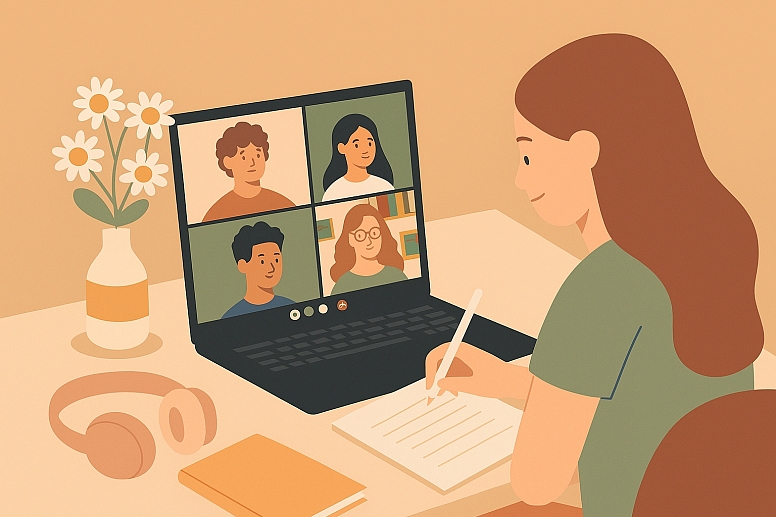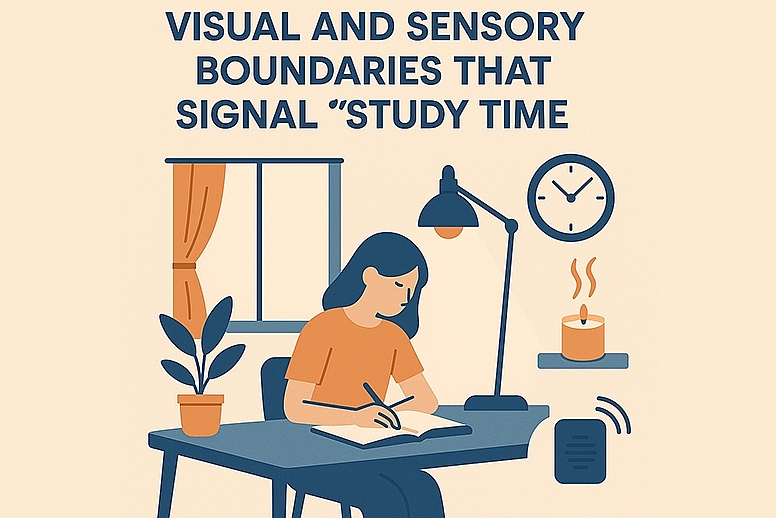
How to Design a Space That Signals 'Study Time' at Home
In today's distraction-filled world, having a dedicated study space isn't just a nice-to-have; it's essential for effective learning. Whether your child is struggling with homework focus or you're pursuing online education yourself, the environment where learning happens matters more than you might think. That’s why creating clear boundaries between study time and playtime is so important, and it all starts with designing a dedicated learning space at home.
From choosing the right desk and comfy chair to using clever storage and calming colors, small design choices can make a huge difference in your child’s focus and motivation. Here’s how to craft a space that inspires learning, reduces distractions, and supports your child’s best work every day.
Why Creating a Dedicated Study Environment Matters
Having a space that signals "study time" helps minimize the mental energy wasted on transitions. When boundaries between activities are clear, the brain doesn't need to work as hard to figure out what mode it should be in. This efficiency is particularly important for effective study time tips implementation, as it allows more cognitive resources for actual learning rather than context-switching.
A consistent, organized workspace reduces distractions and helps signal to your child’s mind that it’s time to concentrate and absorb new information. This is especially important when combining home learning with online tutoring, as a quiet, well-prepared area ensures sessions run smoothly and your child can engage fully with their tutor. A thoughtfully designed study spot provides the structure children need to thrive, turning study time into a positive, productive part of their daily routine.
Establishing Your Home Study Command Center: Location Strategies
Before diving into design elements, choosing the right location for your study space is crucial. This first decision lays the foundation for all other aspects of your study environment.
Strategic Placement: Beyond the Kitchen Table
The key to creating boundaries for studying begins with location selection. While kitchen tables might seem convenient, they often sit at the intersection of multiple household activities, making sustained focus challenging.
Instead, look for underutilized areas of your home: a quiet corner in a bedroom, a section of the living room that gets less traffic, or even a repurposed closet. The ideal spot balances accessibility with minimal distractions. Consider using room dividers, bookcases, or even curtains to visually separate your study zone from the rest of the space.
The Neurological Benefits of Consistency
Your brain forms stronger neural pathways when you repeatedly study in the same place. This consistency creates what neuroscientists call "place cells", specific neurons that fire when you enter a familiar environment.
Using the same location for studying helps strengthen these neural connections over time. Your brain begins to associate that specific spot with focus and learning, making it easier to get into study mode each time you sit down. This principle works for learners of all ages, from elementary students to adult learners pursuing advanced degrees through online tutoring or self-study programs.
Adapting Spaces for Different Learning Styles
Not all learners thrive in the same environment. Visual learners might benefit from well-lit spaces with room for diagrams and charts. Auditory learners may need a quieter location or noise-canceling headphones. Kinesthetic learners might prefer a space with room to move or fidget while studying.
Consider your or your child's learning preferences when selecting and designing your study location. The best study environments accommodate natural tendencies rather than fighting against them.
Visual and Sensory Boundaries That Signal "Study Time"
Once you've established the physical location, the next step is creating sensory signals that tell your brain it's time to focus.

Lighting Psychology for Optimal Focus
Lighting plays a crucial role in setting the study mood and supporting concentration over extended periods. Natural light provides the ideal illumination for most study tasks, reducing eye strain and boosting alertness. Position your study space near a window when possible, but avoid direct glare on screens. For evening studying, choose lighting with color temperatures around 5000K, which mimics daylight and helps maintain alertness.
Task lighting should complement overhead illumination, providing focused light exactly where you need it. This creates a visual boundary around your work area, drawing attention to study materials while subtly dimming the surrounding space.
The Sensory Study Environment
Beyond sight, other senses play important roles in creating effective study boundaries.
Sound management might mean using white noise machines to mask household sounds or implementing a "quiet hours" policy during study sessions. Some students benefit from background instrumental music, while others need complete silence.
Aromatherapy can create powerful study associations; scents like rosemary, mint, or citrus have been shown to enhance alertness and memory. Using a specific scent only during study time creates another sensory boundary that signals focus time to your brain.
Study Space Design Elements
The physical components of your study space significantly impact both comfort and focus duration.
Ergonomic Setups That Sustain Focus
An uncomfortable body leads to a distracted mind. Proper ergonomics isn't just about preventing physical pain; it's about removing bodily distractions that pull attention away from learning.
Choose seating that supports proper posture while allowing slight movement. The ideal study chair should allow feet to rest flat on the floor with thighs parallel to the ground. Desks or tables should be positioned so that work can be done at elbow height to prevent hunching.
For younger children, furniture should be scaled appropriately, their feet should touch the floor when seated, and not dangle. Consider adjustable options that can grow with your child over time.
Organization Systems That Minimize Cognitive Load
Clutter creates visual noise that competes for attention with study materials. Effective study space design includes storage solutions that keep necessary items accessible while maintaining a clean workspace.
Vertical storage maximizes space efficiency in smaller study areas. Wall-mounted shelves, pegboards, or hanging organizers keep supplies visible but off the work surface. Use containers, dividers, and labels to create homes for different categories of supplies.
Your Study Space Journey
Creating an effective study environment isn't a one-time project but an evolving process. Pay attention to what works, adjust what doesn't, and remember that small changes can yield significant improvements in focus and productivity. The boundaries you create, both physical and psychological, send powerful signals to the brain about what mode to operate in.
With thoughtful design and consistent use, your study space can become a powerful tool for learning success at home.
Common Questions About Study Space Design
How to create study boundaries in a small apartment?
In tight spaces, use folding screens, curtains, or bookcases to section off a "study zone." Even a dedicated corner with consistent lighting and a comfortable chair can train your brain to associate that spot with focused work. Consider a fold-down desk that disappears when not in use.
What's the ideal study space for children with attention difficulties?
Create a minimalist space with limited visual distractions. Use noise-cancelling headphones if needed, and consider movement-friendly options like standing desks or balance ball chairs. Consistent routines and clear visual boundaries are especially important for these learners.
Can background music be beneficial for studying?
It depends on the person and the task. Instrumental music at a low volume can help some people focus by masking distracting environmental sounds. However, music with lyrics often interferes with language-based tasks like reading or writing. Experiment to find what works for you.










